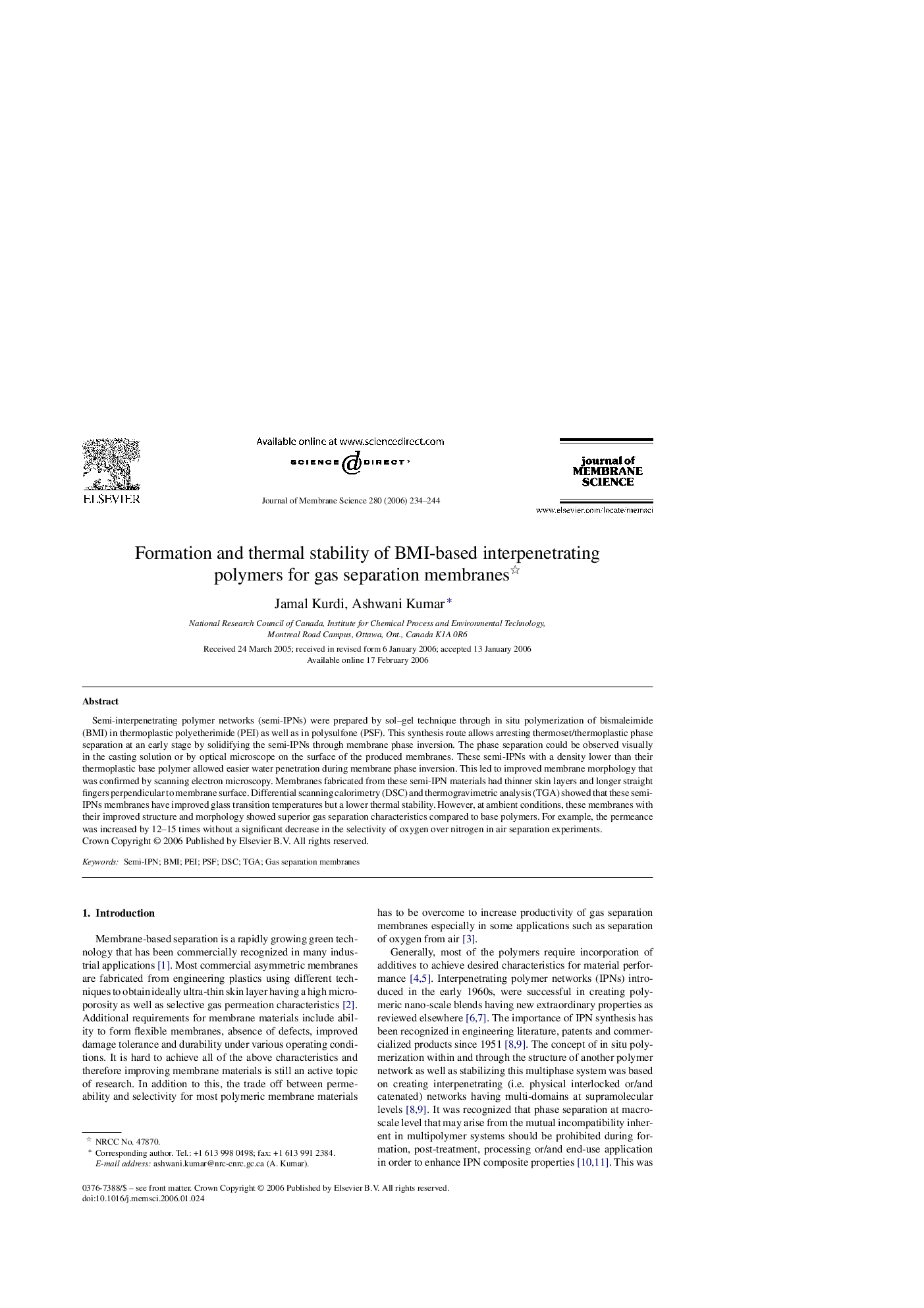| Article ID | Journal | Published Year | Pages | File Type |
|---|---|---|---|---|
| 638848 | Journal of Membrane Science | 2006 | 11 Pages |
Semi-interpenetrating polymer networks (semi-IPNs) were prepared by sol–gel technique through in situ polymerization of bismaleimide (BMI) in thermoplastic polyetherimide (PEI) as well as in polysulfone (PSF). This synthesis route allows arresting thermoset/thermoplastic phase separation at an early stage by solidifying the semi-IPNs through membrane phase inversion. The phase separation could be observed visually in the casting solution or by optical microscope on the surface of the produced membranes. These semi-IPNs with a density lower than their thermoplastic base polymer allowed easier water penetration during membrane phase inversion. This led to improved membrane morphology that was confirmed by scanning electron microscopy. Membranes fabricated from these semi-IPN materials had thinner skin layers and longer straight fingers perpendicular to membrane surface. Differential scanning calorimetry (DSC) and thermogravimetric analysis (TGA) showed that these semi-IPNs membranes have improved glass transition temperatures but a lower thermal stability. However, at ambient conditions, these membranes with their improved structure and morphology showed superior gas separation characteristics compared to base polymers. For example, the permeance was increased by 12–15 times without a significant decrease in the selectivity of oxygen over nitrogen in air separation experiments.
